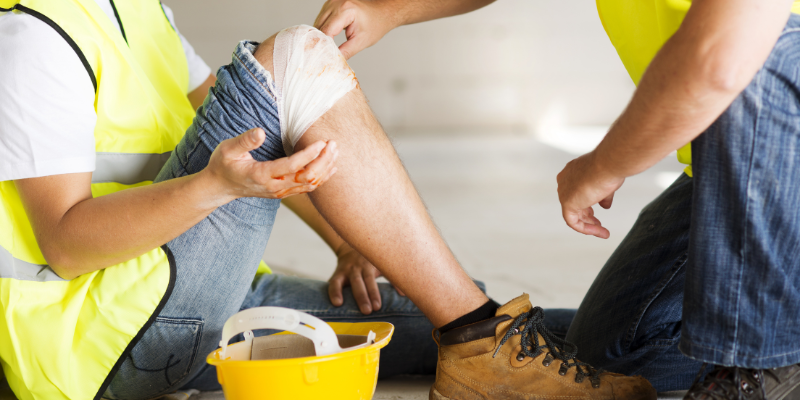
National Safety Month is coming to a close and we’ve covered many topics regarding safety in the workplace. For our last blog of the month, we are covering one of the most discussed topics of the National Safety Council: slips, trips, and falls. Did you know that 1 in every 4 workplace injuries across all industries are caused by slips, trips, and falls? While many of these include accidents on ground-level, there are also a fair amount that occur between different stories and some can even be fatal. That being said, let’s look at some ways we can reduce this cause of injury in the workplace.
Keep Floors Clean and Clear
This may seem like a no brainer, but if even one person neglects to follow this standard, it can lead to accidents that could have been avoided. An obstructed pathway can easily lead to slips and trips even if easily visible. All in all, just keep it clear.
Put the Cables Away
As a continuation of keeping floors clean and clear, make sure cables are away too! As miniscule as they may seem, cords and cables serve as yet another obstacle in making your way through the workplace safely. Run them behind walls, under carpets, or use cable ties to keep them orderly. Overall, just avoid having them run through walkways whenever possible.
To read our previous National Safety Month blog, click here.
Utilize Ladders and Step Stools
Have you ever tried to reach something on the top shelf and took the easier, more effortless route like getting on top of a counter or an unstable ledge, only to take a hard fall? We have all done it and it feels like the quickest option, but it definitely isn’t the safest. Work areas should have accessible ladders and step stools for employees to reach heights safely. As an employee, take note of where these are and don’t neglect using them just because it will take a few less seconds. As an employer, train your employees on when to use this equipment, where it can be found, and most importantly: how to use it.
Adequate Lighting
Don’t underestimate the power and safety that comes with good lighting in the workplace. Whether it’s neon lighting to highlight an emergency exit or general workplace lighting, it all makes a difference. Not only can it reduce fatigue and headaches while increasing productivity, but it also helps prevent unnecessary injuries and accidents. The better lit an area is, the easier it is to identify hazards and avoid them.
Enforce Proper Footwear
At The Performance Group, we put together a list of essential work equipment for each job to ensure it is done safely and efficiently. Different jobs may require different equipment and uniforms even down to the shoes. While clerical positions may allow heels, they would be deemed a safety hazard in a warehouse job. In that same manner, open toe shoes might not prevent risk in one environment. However, if harmful chemicals are constantly being moved or opened, they now become a risk. Understanding the responsibilities of a position will help clarify what footwear and other safety equipment is necessary.
Signage
Signs are great for bringing attention to current safety hazards and where to take extra caution to prevent safety hazards. In a manufacturing environment, these are essential to preventing injury in a room full of heavy machinery, heights, and sharp objects. They increase awareness and attentiveness, lowering the risk of potential accidents. This is your sign…to put up a sign.
To learn more about slips, trips, and falls or to find additional safety resources, visit the National Safety Council’s website.
This brings our National Safety Month blog series to a close! If you’ve been following along, consider subscribing. We write on all things employment and work-related! And keep all of these safety tips in mind for your future staffing and employment endeavors. Remember…safety is no accident!
